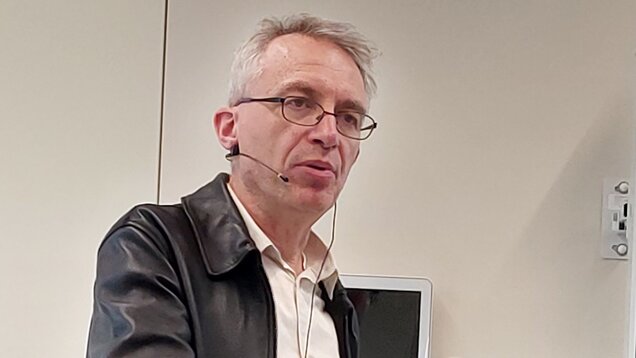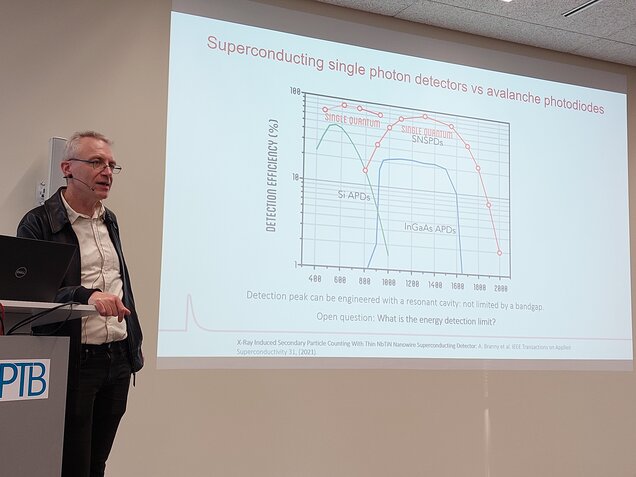Detecting light at the single photon level: quantum devices and applications
Zeit
Ort
Anna-von-Helmholtz-Bau
Eingang: Ecke Marchstraße/Fraunhoferstraße
Organisation
Sprecher:innen
- Prof. Dr. Val Zwiller
Im Berliner Physikalischen Kolloquium wird
Prof. Dr. Val Zwiller,
Royal Institute of Technology Stockholm (Schweden) und Single Quantum BV Delft (Niederlande),
vortragen.
Zusammenfassung
The ability to detect single photons is crucial for quantum optics as well as for a wide number of applications. Several technologies have been developed for efficient single photon detection in the visible and near infrared. The invention of the superconducting nanowire single photon detector in 2001 enabled the development of a new class of detectors that can operate close to physical limits. Different aspects will be discussed including wavelength detection range, time resolution, dark counts, saturation rates and photon number resolution along with various applications such as Lidar, quantum communication, deep space communication, microscopy and bio-medical measurements.
Multipixel single photon detectors based on superconducting nanowires will also be discussed, including a quantum spectrometer that is based on an array of high-performance single photon By time stamping single photon detection events at the output of a spectrometer we generate data that can yield spectra as well as photon correlations such as g(2), g(3) to g (n) as well as cross correlations among different spectral lines, under pulsed excitation, transition lifetimes can also be extracted. This instrument therefore replaces a spectrometer, a streak camera, a Hanbury-Brown Twiss interferometer and operates with far higher signal to noise ratio than is possible with existing detectors that are commonly used in the infrared.



